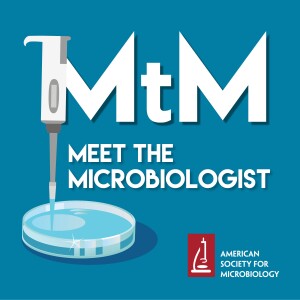
118: Lyme Disease and Other Tick-Borne Infections with Jorge Benach
 2019-10-11
2019-10-11
Identified in the 1980s, Borrelia burgdorferi and other Lyme disease-associated spirochetes have since been found throughout the world. Jorge Benach answers questions about Lyme Disease symptoms, his role in identifying the causative bacterium, and his current research on multispecies pathogens carried by hard-bodied ticks.
Julie’s Biggest TakeawaysErythema migrans (the classic bullseye rash) is the most common manifestation that drives people to go see the doctor to be diagnosed with Lyme disease, but only about 40% of people diagnosed with Lyme disease experience erythema migrans.
Lyme disease can progress to serious secondary manifestations. Why some patients experience these additional disease manifestations, but others do not, is one of the heaviest areas of study in Lyme disease.
Though Borreliadoesn’t have virulence factors that mediate tissue damage, it does avoid the immune system via antigenic variation. When the bacterium is first introduced into a new human host, that person’s immune system generates reactions to the outer membrane components. These bacterial components change over time, leaving the immune response lagging behind and unable to clear the infection.
Ixodesticks are the vector for Lyme disease and there are 3 stages in the Ixodestick life:
Larvae: the stage during which the tick is most likely to become infected by feeding on a rodent. Nymph: the stage most likely to infect a person (due to their small size, they are less likely to draw attention while feeding). Adult: the stage when the tick develops into a sexual adult; females are most likely to be infected but because female ticks are large, most people will detect and pull out a feeding adult. Ticks feed for 2-4 days; removing a tick in the first 48 hours of attachment decreases the chance for transmission to the patient.Long Island is seeing anecdotal increases of Ambliomaticks (the Lone Star tick), which can transmit the human pathogen Ehrlichia. These anecdotal increases were one of the motivations behind a recently published survey of ticks and the human pathogens they carry.
Links for This Episode MTM Listener Survey, it only takes 3 minutes. Thanks! Jorge Benach website at Renaissance School of Medicine Stony Brook University Sanchez-Vicente S. et al. Polymicrobial Nature of Tick-Borne Diseases. mBio. September 10 2019. Monzón J.D. et al. Populaiton and Evolutionary Genomics of Amblyomma americanum, and Expanding Arthropod Disease Vector. Genome Biol Evol. May 2016. ASM Article: The Bulls-Eye Rash of Lyme Disease: Investigating the Cutaneous Host-Pathogen Dynamics of Erythema Migrans Patient Zero podcastHOM Tidbit: Barbour A.G. and Benach J.L. Discovery of the Lyme Disease Agent. mBio. September 17 2019.
More Episodes
 2010-10-06
2010-10-06
 2010-09-23
2010-09-23
 2010-09-01
2010-09-01
 2010-08-18
2010-08-18
 2010-07-14
2010-07-14
 1
1
 2010-07-01
2010-07-01
 1
1
 2010-05-19
2010-05-19
Create your
podcast in
minutes
- Full-featured podcast site
- Unlimited storage and bandwidth
- Comprehensive podcast stats
- Distribute to Apple Podcasts, Spotify, and more
- Make money with your podcast
It is Free
- Privacy Policy
- Cookie Policy
- Terms of Use
- Consent Preferences
- Copyright © 2015-2024 Podbean.com




